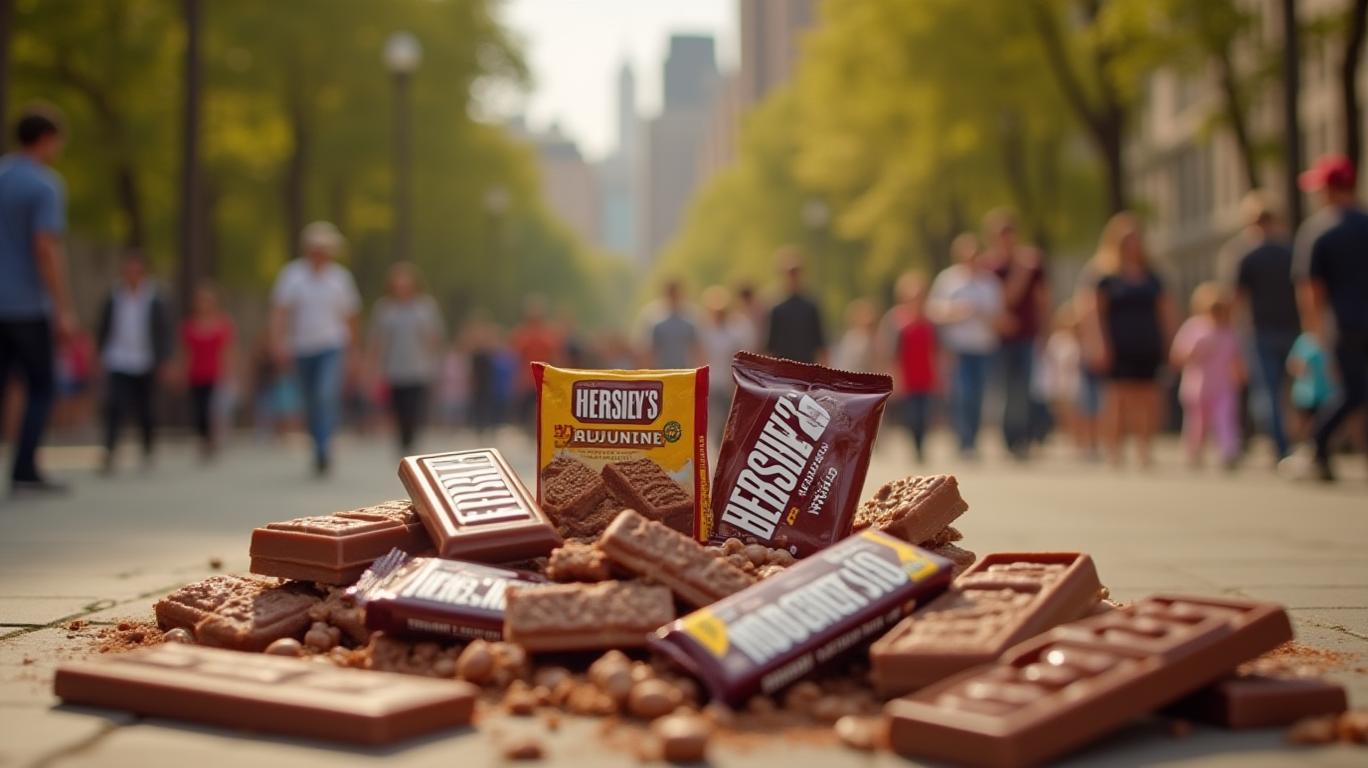Hershey’s Strategic Playbook: Navigating Challenges to Achieve 2%-4% Sales Growth
Hershey Company (HSY) has long been a bellwether in the confectionery and snacking industries, but its recent investor presentation highlighted a critical crossroads: balancing near-term headwinds with long-term ambitions to sustain 2%-4% annual net sales growth by 2025. At the CAGNY 2025 Conference, management outlined a multi-pronged strategy to address cocoa inflation, tariffs, and shifting consumer preferences while leveraging acquisitions and operational efficiency to drive resilience.

The Challenges: Cocoa, Tariffs, and Margin Pressure
Hershey faces a volatile landscape:
- Cocoa Prices: Cocoa futures hit record highs in early 2025, with prices averaging $3,500/ton, up nearly 20% year-over-year. CEO Michele Buck warned that cocoa cost volatility could pressure earnings by $100M+ per quarter in late 2025 if unresolved.
- Tariffs: U.S. tariffs on cocoa imports added $15–$20M in Q2 2025 costs, with risks of further escalation. The company is investing in a domestic chocolate facility in Pennsylvania to mitigate reliance on imports.
- Margin Squeeze: Gross margins contracted 370 basis points YoY in Q1 2025, driven by commodity inflation and lower volume. Adjusted EPS for the quarter fell 32% to $2.09, though this beat estimates due to cost controls.
The stock has underperformed peers like Mondelez (MDLZ) and PepsiCo (PEP) amid these pressures, down 15% YTD as of early 2025.
The Playbook: Strategies for Growth and Resilience
- Operational Efficiency: The $125M annual savings target via the Agility & Automation Advancement (AAA) program aims to offset inflation through supply chain and SG&A cost reductions. In Q1, advertising expenses fell 14%, freeing capital for innovation.
- Portfolio Diversification: Acquisitions like Sour Strips (a 30-basis-point sales growth contributor) and Lesser Evil (pending) are expanding the “better-for-you” portfolio, targeting health-conscious consumers.
- Innovation-Driven Growth: Limited-edition products (e.g., Reese’s PB&J) and campaigns (e.g., Kit Kat’s Break Brothers) are revitalizing brand relevance. SkinnyPop and Dot’s Pretzels delivered 6.4% and 20.7% sales growth, respectively, in Q1, capturing share in salty snacks.
- Scenario Planning: Management presented EPS recovery scenarios tied to cocoa prices, giving investors clarity on variability. For example, a $500/ton cocoa price decline could add $0.50/share to EPS.
The Numbers: Can hershey Hit 2%-4%?
- Guidance: The company reaffirmed at least 2% sales growth for 2025, with the upper end of 4% likely contingent on resolving tariff risks and accelerating M&A synergies.
- Adjusted EPS: Despite Q1’s struggles, Hershey projects a mid-30% decline to $6.00–$6.18, excluding tariffs. If tariffs ease, upside could emerge.
- Segment Performance:
- North America Salty Snacks: Grew 1% in Q1, with SkinnyPop gaining 190 basis points in popcorn share.
- International: Constant-currency sales fell 7.9%, but Mexico and Brazil showed mid-teens growth, signaling untapped potential.
Risks and Uncertainties
- Tariff Resolution: Unresolved U.S. cocoa tariffs could add $100M+ in quarterly costs, wiping out the 2% growth target.
- Consumer Sentiment: Snacking categories face headwinds as inflation constrains discretionary spending.
- Cocoa Volatility: Prices are “disconnected from fundamentals,” per management, risking further margin pressure.
Conclusion: A Growth Target Rooted in Resilience
Hershey’s 2%-4% sales growth ambition is achievable but hinges on executing three critical levers:
1. Tariff Mitigation: A resolution to cocoa tariffs could unlock $0.50–$1.00/share in upside.
2. M&A Synergies: Integrating Sour Strips and Lesser Evil (if finalized) could add 50–100 basis points to sales growth.
3. Operational Discipline: The AAA program’s $125M savings target is critical to offsetting inflation and preserving margins.
While near-term risks remain, Hershey’s focus on salty snacks, better-for-you products, and cost discipline positions it to deliver low-single-digit sales growth over the next three years. Investors should monitor tariff developments and Q2 results, with the stock offering a 1.8% dividend yield as a buffer against volatility.
In a sector where peers like Mondelez (MDLZ) grow at high-single-digit rates, Hershey’s 2%-4% target is modest but realistic. For now, the path to 4% hinges on resolving external headwinds—and that’s a bet on both strategy and policy.
Ask Aime: Can Hershey Overcome Near-Term Headwinds?

_b905d9341749265671656.jpg)








